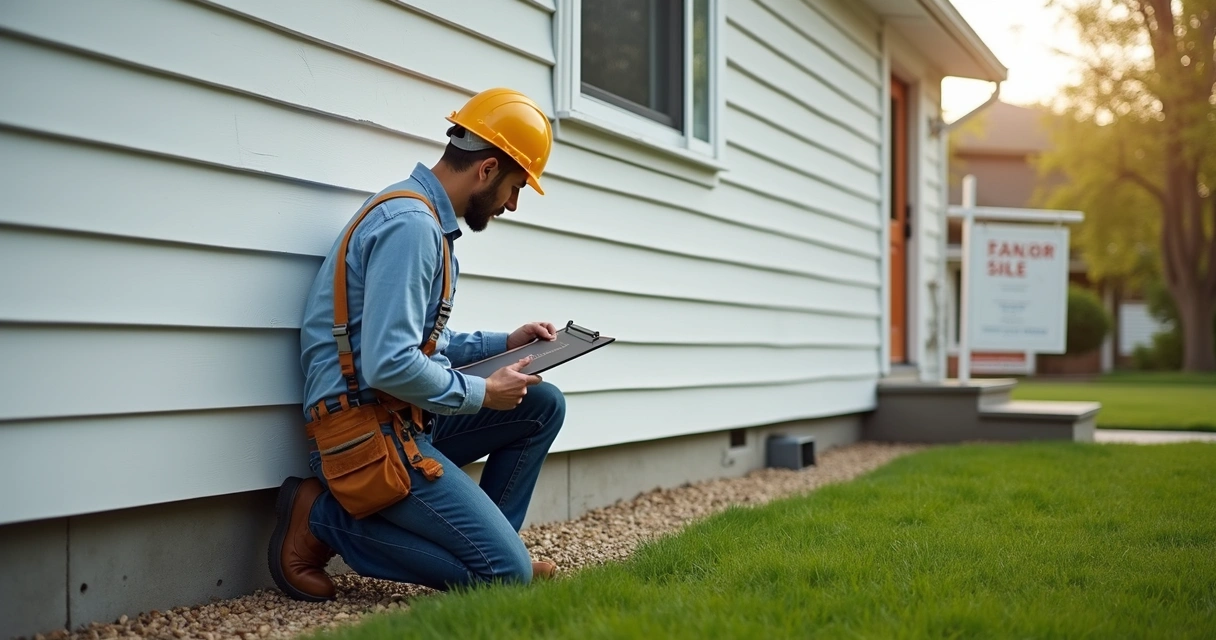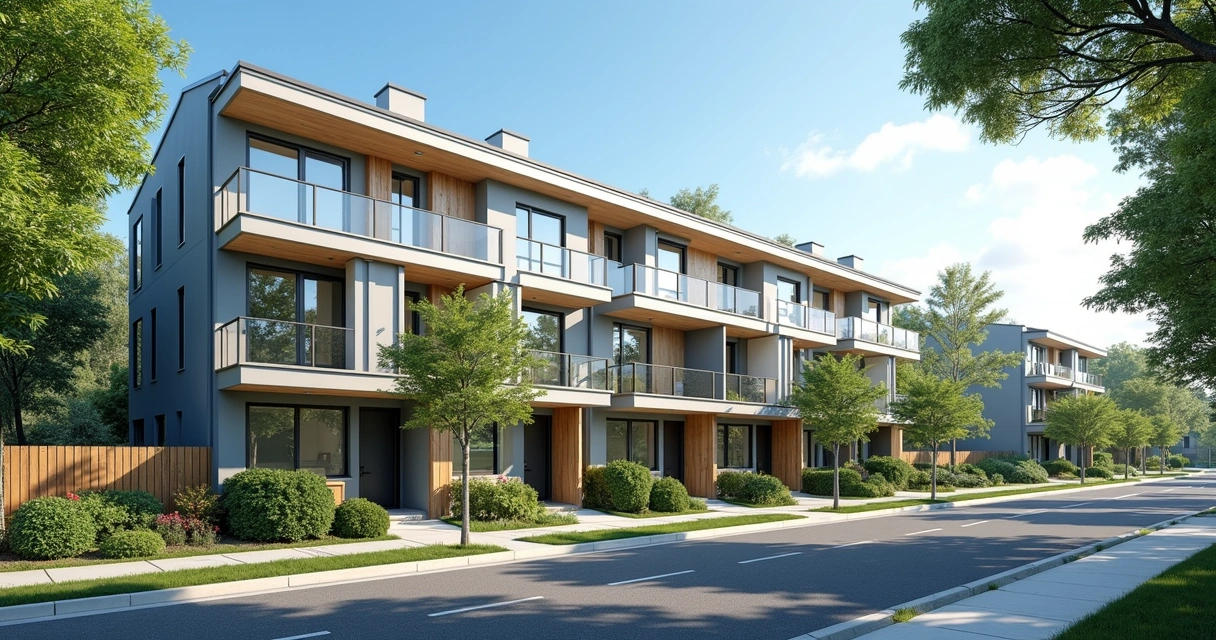When I first started thinking about buying a property in the US, the process felt like a maze of steps, numbers, and paperwork. Over the years, and after helping several clients (and some friends) through their journey, I’ve seen how a clear, structured approach really cuts down on stress and, frankly, the surprises. So, if you’re curious about the right path or considering your first steps, let me walk you through what I see as the real-world, step-by-step process of home buying in the United States. I'll include lessons, caution points, and tips you won’t always find on a checklist, with a little help from Heart Mortgage’s years of experience assisting buyers of all backgrounds.
Understanding your motivation: Why do you want to buy?
It may sound philosophical, but this is the place I always ask clients to start. Before you crunch numbers or call real estate agents, take a moment to answer: Why do you want to become a homeowner in the US?
- Is it your first time leaving the rental market?
- Are you investing for income or future appreciation?
- Maybe you want a place to retire or a vacation home?
Your answer deeply shapes the type of property, location, and even timing of the purchase. For me, helping my clients clarify this point has often changed everything from their budget to their expectations—sometimes even leading them to pause and save a bit longer, or to widen their search area.
Setting the foundation: Financial preparation
Now let’s talk about the backbone of home buying: your finances. This is possibly the single most influential phase in the entire journey, so I like to give it the focus it deserves.
Checking your credit: Your score matters
In my experience, almost every lender, including those at Heart Mortgage, starts by evaluating your credit score. This three-digit number (usually between 300 and 850) doesn’t just determine if you can buy—it sets the terms of your loan, especially your interest rate.
Most conventional lenders look for a score of 620 or higher, but the best rates are usually reserved for those above 740.If you’re not sure where yours stands, most major credit bureaus offer free or low-cost checks. Remember, even small changes can make a big difference. I’ve watched clients boost their scores within months by paying down high credit card balances or correcting errors on their reports.
Savings: Down payment and beyond
There’s a big myth that you need 20% down to purchase a home in the US. That's not always true, but having a larger down payment will usually secure more attractive terms. According to recent EconEdLink home buying data, down payments have averaged around 6-12% for many buyers in recent years.
- 3%-5% down is possible for certain first-time programs and government-insured loans.
- 5%-20% down is more common for conventional buyers, especially with stronger credit.
- 20% or more avoids private mortgage insurance (PMI) and can unlock the very best rates.
Don’t forget that you’ll also need cash for closing costs (often 2-5% of the purchase price), as well as a little cushion for moving and unexpected expenses. I always recommend clients use tools like the home affordability calculator from Heart Mortgage to gauge what’s realistic for both savings and monthly outlay before making any offers.
Budgeting realistically: It’s about more than the mortgage
In my early days, I underestimated just how many costs buyers overlook. You don’t just budget for principal and interest. Property taxes, homeowner’s insurance, private mortgage insurance (if applicable), HOA fees, utilities, and maintenance can add hundreds to your monthly expenses. I encourage everyone to create a full housing budget—if needed, work with a mortgage specialist who can walk through the likely all-in payment.
Don’t let hidden costs eat away your homeownership joy.
The power of pre-approval: Why it’s your best friend
Getting pre-approved for a mortgage is, in my opinion, a step that signals both to you—and to sellers—that you’re serious. Pre-approval means a lender has looked at your credit, income, debts, and decided how much you can borrow. It’s not quite a guarantee, but it’s a major badge of credibility when you make an offer.
Pre-approval documents typically include your proof of income, employment verification, asset statements, and personal identification.Most buyers I work with feel more confident house hunting once they know what their real limits are. If you aren’t sure what pre-approval involves, Heart Mortgage has a detailed mortgage preapproval guide that covers the details, paperwork, and next steps.
Choosing the right kind of loan
This is where buyers often face analysis paralysis—so many choices, and each comes with trade-offs. In the US, the main options are:
- Conventional loans: Widely used, usually need better credit, available with as little as 3% down in some cases
- Government loans (FHA, VA, USDA): Lower down payment and more flexible credit, but certain conditions apply
- Specialty loans: For self-employed, investors, or non-traditional scenarios
I think it pays to talk through options with an expert, since each product fits a different profile. Information about conventional loan programs can help you get oriented, particularly if you’re planning on a primary residence or have strong financial fundamentals.
Interest rates and terms
Interest rates, whether fixed or adjustable, significantly impact the overall cost of your mortgage. When I compare options for clients, I remind them that while lower monthly payments from longer terms (like 30 years) are tempting, you’ll end up paying more in interest by the end. Conversely, shorter loans (like 15 years) mean higher payments but usually much lower interest paid overall.
Finding your real estate agent: Who should you trust?
If there’s one thing I’ve argued about (politely!) with clients over the years, it’s the role of the real estate agent. Some buyers try to go it solo, but a skilled, honest agent can end up saving (or making) you thousands—especially if you’re not familiar with a city or state.
A good agent knows the local market trends, negotiates effectively, suggests fair prices, and guides the process from start to finish.I always advise interviewing two or three agents, seeing who listens well, and asking for past client reviews. If you’re an investor, find someone with specific rental or fix-and-flip background. For first-timers, opt for someone who is patient with questions and explains each step in plain language.
Searching for your perfect home
This is the fun part, but in my experience, it’s easy to get swept away by emotions and lose track of your priorities. Before you click through hundreds of listings, define your “must-haves” and your “nice-to-haves.”
- What’s your commute like?
- Is school quality a priority?
- Do you need a yard, or would a condo work?
Right now, market conditions matter a lot. According to recent Massachusetts housing statistics, there’s ongoing demand for single-family homes, and prices have continued rising. Inventory can shift quickly, so staying flexible helps. Your agent should provide insight into neighborhood trends, recent sales prices, and competitive offer tactics.

Open houses, private showings, and virtual tours
When I work with buyers, I always encourage them to see several properties, either virtually or in person. Don’t be afraid to ask tough questions or check details you might otherwise ignore, such as:
- What’s included in the sale (appliances, fixtures)?
- How old is the roof and HVAC system?
- What is the average utility bill?
Take notes. Compare houses objectively to avoid the “shiny new” trap that can lead to overspending or buyer’s remorse.
Making an offer and negotiating
You’ve found a house that fits. Now comes the negotiation. Your agent will draft an offer, which includes your price, down payment, pre-approval letter, and any conditions (like repairs or closing date requests). The seller may counter, and sometimes there are several rounds of back and forth.
In my experience, patience and a calm head win more homes than tough talk.
This is also when emotions peak—especially when bidding wars begin. Try to keep your initial budget as your north star. If you get outbid, don’t overextend purely out of excitement or fear of missing out.
Inspections and appraisals: Protecting your investment
After a seller accepts your offer, it’s time for due diligence. Unless you’re buying “as-is” (riskier and rare for first timers), always schedule a professional inspection. These usually cover:
- Roof, foundation, and structural integrity
- Plumbing, electrical, HVAC systems
- Evidence of pests, mold, or water intrusion
The appraisal comes next and is required by your lender—it confirms the market value matches the agreed price. If the appraisal comes in low, the lender may lower the loan amount, opening another round of negotiations. Sometimes a seller will adjust the price; other times, you might increase your down payment or reconsider the deal.
How to handle inspection issues
Most inspections reveal some kind of issue—it’s normal. What matters is whether the issues are minor or financial dealbreakers. In my conversations with clients, I suggest focusing on major systems (foundation, roof, expensive appliances) and negotiating repairs or credits as needed. Don’t sweat the small stuff like paint colors or light fixtures.

The paperwork: What documents you need
By this point, you’re probably dreaming about moving in—but the mountain of paperwork ahead has caught many buyers by surprise. Lenders, title companies, and real estate attorneys all need precise documents, especially if you’re not a US citizen (more on this soon).
- Identification (driver’s license, passport)
- Proof of income (pay stubs, tax returns)
- Bank statements
- Credit history
- Employment verification
- Asset documentation
For foreign buyers, additional paperwork is common. I’ve worked with non-resident clients (especially from Brazil and Europe) who needed translations, visa info, or proof of foreign income—this can slow things, but most lenders familiar with international buyers have clear processes in place.
Closing the deal: From contract to keys
Closing, sometimes called “settlement,” is when you legally become the owner. It typically happens 30-60 days after your offer is accepted, though cash deals or special circumstances (like new construction) can change this timeline.
This is where all remaining money—down payment, closing costs—are paid, and legal ownership is transferred.You’ll sign the mortgage documents, deed transfer, title insurance, and various federal disclosures. Having a good agent by your side, plus an experienced mortgage expert (like those at Heart Mortgage), makes navigating any hiccups much easier.

Typical closing costs
These costs vary, but usually include:
- Loan origination fees
- Title insurance and search
- Appraisal and inspection fees
- Attorney or escrow agent fees
- Recording and transfer taxes
- Prepaid interest, taxes, and homeowner’s insurance
On average, expect to pay an extra 2-5% of the home price at closing (in addition to your down payment). I always warn clients not to drain their cash reserves entirely at this stage—having a savings buffer is still useful as you settle in.
After closing: What to do next?
Congratulations if you’ve made it to this point! The transition to homeowner comes with new priorities. Updating your address, setting up utilities, reviewing your homeowner’s insurance, and planning regular maintenance are just a few.
Homeownership is a journey, not a single event.
And if you ever have questions after move-in—maybe about refinancing, home equity lines, or property tax questions—don’t hesitate to reach out to your mortgage provider, your agent, or resources like Heart Mortgage’s ongoing client support. Continuous education makes you a more confident and resilient homeowner, as studies into homeowner education and support have shown time and again. Buying a home is just the beginning.
Special considerations for foreign buyers
I’ve had the privilege to help many international clients realize their US property dreams. While the basics are similar, some key differences stand out:
- You do not have to be a US citizen to purchase real estate. Foreign nationals are welcome to buy property (commercial or residential), but will need an Individual Taxpayer Identification Number (ITIN) and likely additional paperwork.
- Lenders may request larger down payments (sometimes 30-40%) for buyers with no US credit history.
- Be mindful of US tax laws: rental income, capital gains, and estate taxes can all be impacted by your country of residence. Consulting with a US-based accountant or tax attorney familiar with international clients is, in my opinion, money well spent.
Though it can be more complex, the process is absolutely possible, and hundreds of thousands of foreign buyers do it each year. Heart Mortgage, for instance, has built specific programs to help non-residents and expats, walking clients through the specific challenges of getting approved by US banks and complying with local tax requirements.

Common mistakes—and how to avoid them
After working on hundreds of purchase deals, I’ve seen a handful of mistakes crop up again and again:
- Not getting pre-approved before house hunting
- Overextending budget due to bidding wars or “dream home” emotion
- Skipping the inspection, especially in competitive markets
- Ignoring total monthly costs (taxes, insurance, HOA)
- Neglecting to factor in local property taxes or higher insurance for flood/wind zones
- Waiting too long to secure financing, leading to missed opportunities
One approach that can help: ask your mortgage advisor to walk through a checklist with you. Resources such as Heart Mortgage’s step-by-step mortgage application guide are built exactly for this reason. I always remind my clients—don’t be afraid to ask questions.
How market trends shape your buying strategy
Local market dynamics have a real impact on your timing, your offer, and even loan approval. Data compiled by EconEdLink and state housing reports illustrate a few major trends:
- The median price of single-family homes has steadily increased over the past decade, with notable jumps in high-demand regions.
- Interest rates fluctuate—low rates increase buying power, but can also heat up competition.
- Most buyers use conventional financing, but all-cash deals have risen in markets where buyers aim to close quickly or sidestep lending hurdles.
I’ve found it helpful to review data like inflation, employment, new construction supply, and affordability indexes. This context informs when to make a move, what offers are likely to be successful, and whether it’s time to save up more or lock in a mortgage now. For latest info, I often reference reports on home price and affordability trends during planning discussions with buyers.

Conclusion: Making your American homeownership dream real
After all the steps, research, documents, and sometimes second-guessing, buying a home in the US can be one of the most rewarding accomplishments of your life. Each person’s journey is unique—I’ve seen first-time buyers get a set of keys and cry, investors negotiate a great deal after months of searching, and foreigners turn a distant dream into reality after careful planning.
While there are definitely hurdles along the way, I believe that the process becomes clearer, and even enjoyable, when you have the right people and tools by your side.
If the process feels daunting, take it step by step: clarify your goals, get your finances squared away, surround yourself with skilled professionals, and always ask for explanations when you’re unsure. With transparent guidance and honest support from teams like Heart Mortgage, your path to a new home can be smoother and more understandable. Ready to take the leap? I invite you to reach out, learn more about our tailored mortgage solutions, and let us help you turn those home-buying plans into keys, contracts, and happy memories.
Frequently asked questions
What is the first step to buy a house?
The first step in buying a house in the US is to assess your finances and get pre-approved for a mortgage. By checking your credit, setting a savings plan, and speaking with a mortgage advisor early, you set realistic expectations about your budget and show sellers you are a credible buyer.
How much down payment do I need?
The amount needed for a down payment varies, but many buyers put down between 3% and 20% of the home’s price depending on the loan program and their financial profile. Some programs allow even less, while others (especially for international buyers) may require more. A larger down payment can reduce your monthly payments and allow you to avoid private mortgage insurance.
Can foreigners buy houses in the US?
Yes, foreigners are welcome to buy both residential and commercial real estate in the US. While the purchase process is much the same, lenders may require more documentation or a higher down payment for those without a US credit history. Heart Mortgage supports many non-resident buyers with dedicated programs.
How long does the home buying process take?
The timeline varies widely, but most home purchases close in 30-60 days after an offer is accepted if financing is involved. Cash buyers or pre-construction deals may progress faster or slower. Delays often occur due to paperwork issues, inspections, or negotiations.
What documents are needed to buy a house?
Typical documents include proof of identity (passport, driver’s license), proof of income (pay stubs, tax returns), bank statements, and credit reports. Lenders may also request employment verification, proof of assets, and— for foreign buyers— visa information or international documents. For a more detailed checklist, consult a mortgage expert or visit resources provided by Heart Mortgage.





